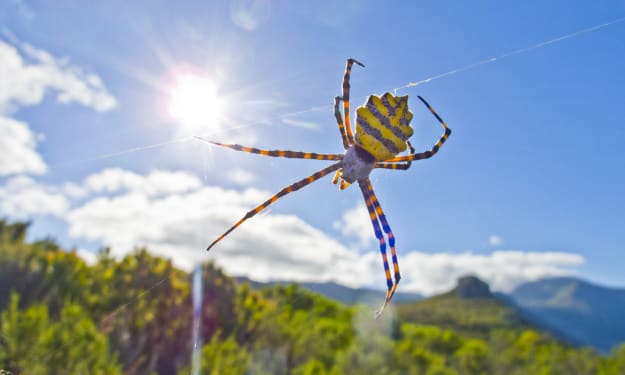Fairy Circles of Namibia
Mystery behind Namibia's strange fairy circles.

Millions of circular patches, each a few meters wide, are found in the coastal desert region of Namib, around 80 to 140km from the Atlantic shoreline. Fairy circles are striking regularly sized and spaced, bare circles surrounded by Stipagrostis grasses.
The mechanisms explaining their origin, shape, persistence and regularity remain controversial. One hypothesis for the formation of vegetation rings is based on the centrifugal expansion of a single individual grass plant, via clonal growth and die-back in the centre. Clonality could explain fairy circles origin, shape and long-term persistence as well as their regularity, if one clone competes with adjacent clones.
Virtually all tested fairy circles, the periphery is not exclusively made up of genetically identical grasses, but these peripheral grasses belong to more than one unrelated genet. These results do not support a clonal explanation for fairy circles.
Lack of clonality implies a biological reason for their origin, shape and regularity must emerge from competition between near neighbor individuals within each fairy circle. Such lack of clonality also suggests a mismatch between longevity of fairy circles versus their constituent plants.
It was also thought termites could be responsible for the phenomenon. Studies suggest the circles could be caused by the grasses themselves adapting to the very limited supply of water.
Assessment of Sporadic rain events in numerous desert regions and analysis of grasses, their roots and shoots, as well as potential termite root damage has been done to explain these patterns, and a conclusion made that the “fairy circles” are caused by plant water stress.
Researchers, including some from the University of Göttingen in Germany, found that the grasses “self-organize” into the geometrical formation to share out water in order to survive.
They installed soil-moisture sensors in and around the fairy circles to record the soil’s water content at 30-minute intervals, starting in the dry season of 2020 and up to the end of the rainy season of 2022.
Scientists also studied how the new emerging grasses around the circles affected the soil water within and around the circles, and assessed the differences in water infiltration between the inside and outside of circles in 10 regions across the Namib.
The findings revealed that, about 10 days after rainfall, the grasses were already starting to die within the circles while most of the interior area of the circles did not have grass germination at all.
About 20 days after rainfall, the struggling grasses within the circles were completely dead while the surrounding grasses were green.
Scientists then examined the roots of the grasses from within the circles and compared them with the green grasses on the outside.
They found that the roots of the grasses within the circles were as long as, or even longer than, those outside, indicating that the grasses were putting effort into the growth of roots in search of water.
However, they found no evidence of termites feeding on roots and it was not until 50-60 days after rainfall that root damage became more visible on the dead grasses.
The sudden absence of grass for most areas within the circles cannot be explained by the activity of termites because there was no biomass for these insects to feed on. But, more importantly, it was only shown that the termites were not responsible because the grasses died immediately after rainfall without any sign of creatures feeding on the root.
Scientists also found the decline in soil water inside and outside the circles was very slow after initial rainfall when grasses were not yet established.But when the surrounding grasses were well established; the decline in soil water after rainfall was very fast in all areas, even though there were almost no grasses within the circles to take the water.
Under the strong heat in the Namib, the grasses are permanently transpiring and losing water. Hence, they create soil-moisture vacuums around their roots and water is drawn toward them. Scientists said the grasses act as “ecosystem engineers” and benefit directly from the water supply provided by the vegetation gaps.






Comments (5)
Insightful
Very informative and well written
Very interesting.
Wow😲
Very interesting! Good to know!